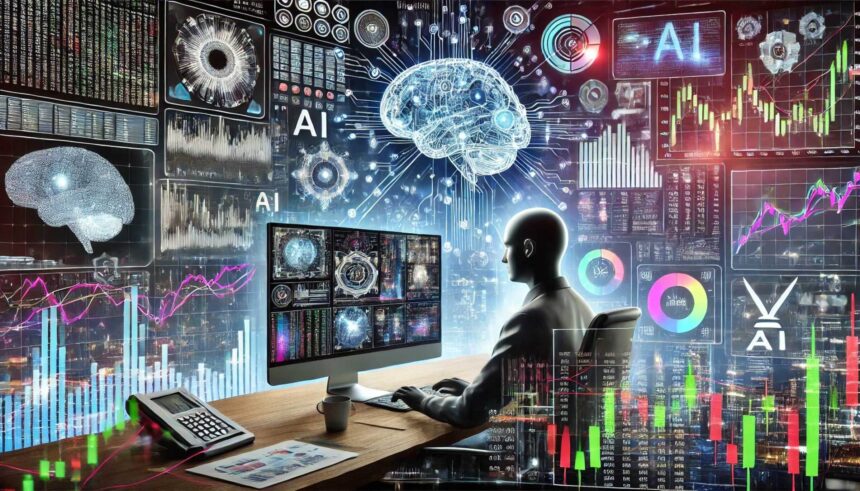In the fast-paced world of finance, technology and innovation are constantly reshaping the way we trade. One of the most groundbreaking developments in recent years is the rise of artificial intelligence (AI) and algorithmic trading. These technologies have revolutionized the way trades are executed, providing more efficiency and accuracy than ever before. In this article, we will delve into the impact of AI and algorithms on trading, exploring the benefits, risks, and future implications for the financial industry.
The Rise of AI in Trading
Artificial intelligence has become a game-changer in the trading world, with more and more firms turning to AI-powered systems to make better trading decisions. These systems are capable of analyzing vast amounts of data in real-time, identifying patterns, and executing trades at lightning speed. This level of automation and intelligence has enabled traders to make more informed decisions and react swiftly to market changes. AI has truly transformed the trading landscape, making it more efficient and competitive.
How Algorithms are Changing Markets
Algorithms play a crucial role in modern trading, as they can execute trades based on predefined criteria without human intervention. These algorithms are designed to react to market conditions in milliseconds, allowing traders to capitalize on opportunities that would be impossible to spot manually. By leveraging algorithms, traders can minimize human error and emotions, leading to more consistent and profitable trading strategies. However, the rapid proliferation of algorithmic trading has also raised concerns about market manipulation and systemic risks.
Benefits and Risks of Algorithmic Trading
Benefits:
- Increased efficiency and speed in executing trades;
- Ability to analyze large datasets and identify patterns;
- Minimization of human error and emotions in trading decisions.
Risks:
- Potential for market manipulation and flash crashes;
- Over-reliance on algorithms could lead to systemic risks;
- Lack of transparency in algorithmic trading strategies.
Understanding Machine Learning in Trading

Machine learning is a subset of AI that enables systems to learn from data and improve over time without being explicitly programmed. In trading, machine learning algorithms can analyze historical market data to identify trends and patterns that can be used to make predictions about future market movements. This technology has the potential to revolutionize trading strategies, enabling traders to adapt to changing market conditions and make better investment decisions.
| Element | Role in Trading | Example |
|---|---|---|
| Machine Learning | Analyzes large datasets to identify patterns | Predicting stock price movements |
| High-Frequency Trading (HFT) | Executes thousands of trades in milliseconds | Arbitrage between markets |
| Natural Language Processing (NLP) | Interprets news and financial reports in real time | Sentiment analysis from financial news feeds |
Future of Algorithmic Trading with AI
The future of algorithmic trading with AI looks promising, with advancements in technology enabling more sophisticated trading strategies and predictive models. As AI continues to evolve, we can expect to see even greater automation and efficiency in trading operations. However, it is crucial for regulators to keep pace with these developments to ensure market integrity and protect investors from potential risks associated with algorithmic trading. By striking a balance between innovation and regulation, we can harness the full potential of AI in trading while safeguarding the stability of financial markets.
In conclusion, AI and algorithmic trading have reshaped the financial industry, offering unprecedented levels of efficiency and automation. While these technologies bring numerous benefits, it is essential for market participants and regulators to remain vigilant against potential risks such as market manipulation and systemic failures. As AI continues to advance, the future of algorithmic trading looks bright, promising new opportunities for traders to thrive in the fast-paced world of finance.

It’s amazing that algorithms can react in milliseconds. That’s something humans can’t do.
The benefits of AI and algorithms are clear, but I worry about the risks like market manipulation.
Algorithmic trading seems promising, but I hope regulators keep up to ensure fairness.
AI might improve trading, but we need to watch out for potential systemic failures.
AI in trading sounds like a big deal. It really changes how fast trades can happen.
I learned that AI helps traders make decisions quickly and accurately. It’s interesting how much data they can analyze!
Machine learning in trading is fascinating! It makes sense that it helps predict future market movements.
I see why AI is important in trading, but how do we manage the risks?
The speed of executing trades with algorithms is impressive, but transparency is a concern.
AI and algorithms make trading more competitive. It’s like a whole new world for traders.